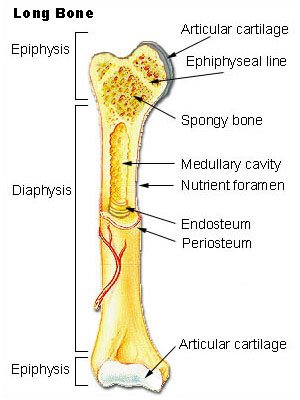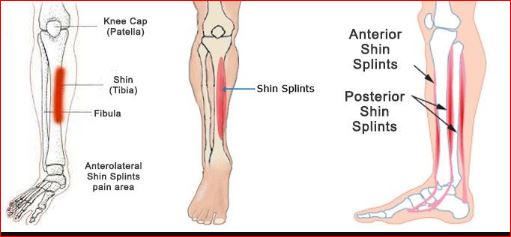What is Periostitis?
Periostitis is a medical condition where the bone covering known as periosteum is inflamed. The bone is always thought of to be hard substance but it is actually living tissue that gets nutrients and excretes waste products just like any other cell in the body.
This also means that it gets infected just the same with the same bacteria that may cause a nasty septic blood infection episode. While the bone is relatively avascular, infection can be insidious and not easily detected until bacteria have cause enough damage to elicit pain.
In the event that infection of the periosteum occurs, the reverse is also true; the infection takes a while to resolve.
Periostitis may also arise from constant stress upon the bone such as highly strenuous physical activities of running or weight lifting. There are two types of periostitis, acute and chronic. Periostitis can occur if there is repetitive stress on the shin bone or tibia.
This is a relatively benign disease and has a good prognosis but continued insults may cause chronic pain and discomfort.
Parts of bone
The bone is living tissue though it always seems to appear as a lifeless frame that our meaty bodies are placed upon that remains even after death. But a histologic analysis of the bone reveals a living structure that has bone functions in structural integrity and functional homeostatic maintenance.

Image 1: Anatomy of the Bone
The bones are made up of different parts. Division and classification of the bones allows easy identification of the affected areas and the most appropriate treatment for rapid healing and return to normal function. The bone is divided into the epiphyses which are the tips of the bone and the diaphysis which is the middle of the bone.
Cartilages line the ends of the bone and provide smooth gliding and reduced friction in between bones. The bone then has different covering that provide structural integrity and strength to the bone, the periosteum which is the outer layer and the endosteum which is the inner layer.
Bones that are constantly stressed will experience the same pain and inflammation as most tissues in the body. Periostitis is a common condition that arises if the periosteum is subjected to repeated insults brought about by excessive exercise and can be fixed if the patient takes time to rest and relax the affected extremity. The dense connective tissue absorbs the blunt of the trauma and becomes inflamed as a result.
Causes
Periostitis can be caused by a variety of factors. The most common is excessive exercise the places great stress on the bone. Inflammation is responsible for a majority of the signs and symptoms of periostitis. The classic presentation of redness, pain, swelling, heat at the site and loss of function are present at the time of the patient’s complaint at the outpatient department.
Another cause is infection. Once bacteria gain access to deep, sterile tissues, they multiply at a slow rate that eventually causes damage to the connective tissues. It can be either from a simple cut or seeding from a different area in the body. Either way, the bacteria cause damage and result into periostitis
The following pain descriptions are characteristic of periostitis: Periostitis is relatively a simple, benign condition that can be effectively managed with rest of the affected extremity as well as simple analgesics like acetaminophen.
- Pain at the affected extremity during movement
- Mild fever
- Difficulty bearing weight on the affected extremity
- Only temporarily relieved by analgesics like acetaminophen or mefenamic acid
- Red, inflamed swelling on the affected extremity

Treatment
The treatment of periostitis will now depend on what is the underlying cause of inflammation. If the inflammation is caused by repetitive excessive exercise on the affected extremity, the therapy is medical conservative therapy that encompasses rest, ice compress and elevation of the affected extremity.
Physiotherapy can be employed to improve pain threshold and allow the patient to tolerate more movements of the extremity suffering from periostitis. This kind of periostitis has a very good prognosis and the patient can make a good return to a normal activity of daily life.
Systemic antibiotic therapy is needed in cases where there is bacterial dissemination and complements aggressive topical corticosteroid therapy to solve the underlying inflammation. Drugs for this category include generally difluprednate, prednisolone or loteprednol etabonate. With effective antibiotic therapy directed at the microorganisms responsible, the infection can be resolved along with the concurrent inflammation.

Follow up therapy
NSAIDs are needed to contain any pain that the patient is experiencing. Long term follow up is needed so that the patient will not have any recurrent bouts of periostitis. The patient also needs to be educated about the nature of the disease so that proper avoidance of any exacerbating factors is made to prevent recurrence.
Conclusion
Periostitis is a relatively benign condition that is easily managed with conservative medical therapy. However, in order to prevent recurrence, accurate diagnosis must be made before the appropriate therapy can be initiated. Bacterial infections are a known cause especially in cases where the patient does not give adequate attention to a scraped knee or a small cut inoculated with bacteria which can lead to infection.
Source:
- Harrison’s Principles of Internal Medicine 19th edition
- Robbin’s Pathology 9th edition
- http://www.healthline.com/health/periostitis#overview1
- https://www.hxbenefit.com/periostitis.html
- http://www.healthline.com/health/periostitis#types2
